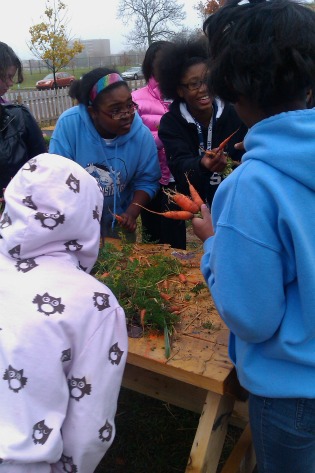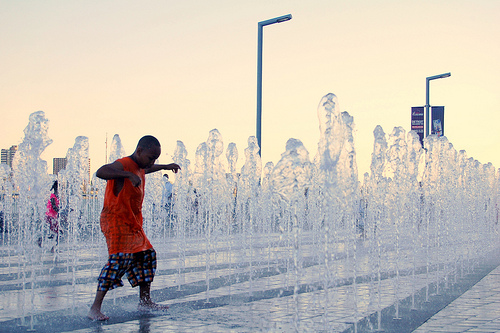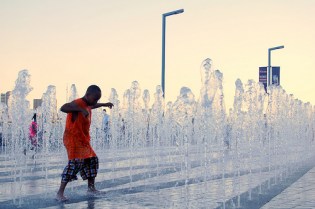When people ask me why I write about architecture, design, and cities — why I focus on these topics instead of all of the others — I like to tell the story of a park bench.
I first read this story many years ago in a book of essays on urbanism. It starts auspiciously enough with the development of a new neighborhood outside of Los Angeles. The developers promoted the neighborhood as one of inclusivity, a place where community would reign supreme. They designed everything from the houses to the garbage cans and the sidewalks.
The park benches they selected were shaped like horseshoes. I assumed the design was to encourage people to face one another and strike up a conversation, but I was wrong. A person cannot sleep on a curve. The bench was designed to be “bum proof” in order to keep the “wrong” kind of person out of this “inclusive” community.
Design is everywhere and it has the power to galvanize community or to thwart it. It can empower or it can disenfranchise. Today there is a growing awareness about the role that design plays in our day-to-day lives. The profession is waking up to the idea of human-centered design, which focuses on the needs of the community as a whole and a belief that good design is that which serves the greater good.
There’s only one problem: Large swaths of our communities are not participating in the design process.
Take architecture. There are about 105,000 registered architects in the United States. According to The Directory of African American Architects, a database sponsored by the Center for the Study of Practice at the University of Cincinnati, there are 1,829 licensed African American architects in the country. Of those, less than 300 are women. The stats are not much better in other design fields — landscape architecture, urban planning, product design.
Why?

Seventh grade students transforming a Detroit community garden. (Photo by Manal Kadry.)
Michelle White believes two things contribute to this disparity: exposure and access. White is the principal of the Henry Ford Academy: School for Creative Studies (HFA) in downtown Detroit. Her public charter middle and high school opened in 2009 and currently serves 690 students. Ninety-eight percent are African American. “We don’t have many minorities in the design field and so there are few role models in the career to show kids the profession,” she says. “There is also a lack of access to the skill-building and academic development needed to go into technical fields, including architecture and design.”
Founded by the College for Creative Studies, an art and design institution, and the nonprofit Henry Ford Learning Institute, which creates public schools in public spaces and hands-on learning programs, White’s school aims to give Detroit’s public school students exposure and access to design thinking and professions. The curriculum was developed in partnership with design firm IDEO and Stanford’s d.school and uses design and the arts as a foundation. Students spend the academic year solving design challenges that carry across all subjects and out into the city itself. Seventh graders have created a new community garden and a series of public service announcements on bullying. Eleventh graders focus on entrepreneurship, with many of their design prototypes raising funds for Detroit nonprofits.
“We’re having a carnival to raise money for a homeless shelter,” White says, “and through the carnival, students studied modeling systems in math class to better understand how much to charge in order to make money to donate.”
The design process corrals various disciplines and individuals around a central problem, requiring both technical and interpersonal skills. “We teach our students how to work in groups, how to empathize, how to prototype,” White says, “and these are skills you don’t often have in schools.”
Especially public schools. But that is beginning to change. HFA isn’t the only urban public school exposing students to the potential of design. There are well-established programs like the Charter High School for Architecture and Design in Philadelphia and Miami’s Design Architecture Senior High, and newcomers like the Baltimore School for Design, a newly launched public middle and high school with a focus on architecture, graphic design, and fashion.
What is also unique about these design-based schools is their emphasis on place. The city becomes a classroom and the students become empowered to see their role in the bigger picture. They learn to ask questions, to seek answers, and to believe that they may become agents of change. They learn to understand the significance of place.
As Alain de Botton writes in his book The Architecture of Happiness: “Belief in the significance of architecture is premised on the notion that we are, for better or worse, different people in different places — and on the conviction that it is architecture’s task to render vivid to us who we might ideally be.”
As I write this piece, the inaugural class of the Baltimore Design School starts their spring term, and another debate rages in the city. Protesters have been marching on the site of a proposed $104 million, 120-unit youth jail in East Baltimore. This significant capital investment comes as budgets for city schools and recreation centers have been decimated. Protestors’ signs read: “Schools Not Jails.”
Fundamental to the dialogue on human-centered design and the protests in Baltimore is a simple fact: What we build matters. Buildings are our culture writ large. They embody our intentions and speak, in brick and mortar, for who we are. Grow up in a community devoid of quality schools and recreation centers but flush in prisons, and what does that say about our collective intentions? How can those kids become who they might ideally be? What we build in cities matters. And who builds those cities also matters.
White is clear on her aspirations for her students. She wants them to succeed, to seek higher education, and then she hopes they might return home. “Our design challenges help students to understand real problems and to bring skills back to their neighborhood,” White says. “We are helping students see that they can go onto college and come back and help the city of Detroit prosper.”




